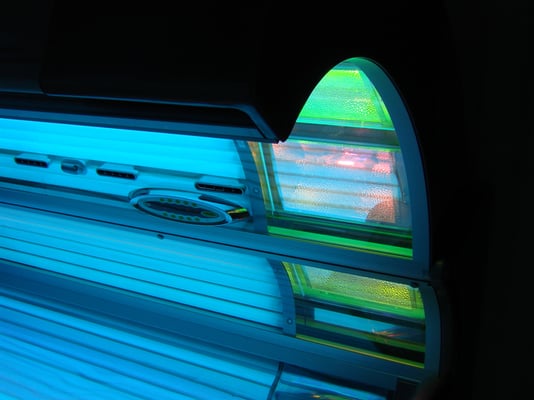 Like so many other manufacturing technologies, counterbalance systems make life easier for the end customer. Matched with the right application, they can be a game-changer for user experience and safety.
Like so many other manufacturing technologies, counterbalance systems make life easier for the end customer. Matched with the right application, they can be a game-changer for user experience and safety.
A counterbalancing mechanism makes it possible to open heavy lids, covers, surfaces, and equipment with little to no effort on the user’s part. From single users to entire industries, counterbalance systems offer benefits that are worth considering for numerous motion control needs.
Before we get into specifics, let's start with the basics: What is counterbalancing?
What Is Counterbalancing?
If you look at many products with heavy lids, you’ll find a counterbalance hinge - at least, if that lid is easy to open. (“Find” is a deceptive word, because often these are hidden or concealed hinges.)
That lid could weigh 80 lbs., but you only feel 2 lbs. of force when you try to open it. You’re lifting “only” 2 lbs. because an engineer expertly designed the lid with a counterbalance.
If the designer wants to, he can create a lid that opens with 3 lbs., 10 lbs., or 15 lbs. of applied force - basically any number he wants (though that number is sometimes determined by price point). That’s one of the most exciting things about a counterbalancing system - it can be designed to operate in numerous ways depending on your application.
How Does Counterbalancing Work?
You might ask, “How does a counterbalance work?” We could go into a deep dive into the specifics of this technology, but a simple explanation is best for most purchasers.
We define a counterbalance as a weight or force that offsets or mitigates another weight or force.
In essence, a counterbalancing system incorporates various types of springs to take the effort out of lifting and supporting a lid, pass-through countertop, cover, or electromechanical equipment. It’s not just the spring itself - it’s how an engineer applies geometry and other design techniques to support the lid.
The system counteracts the weight of the lid and balances it in a way that achieves the desired result.
Type of Counterbalance Hinge Systems
In a general sense, there are three types of counterbalance hinge systems:
- A mechanical counterbalance hinge is designed to provide support and balance for heavy objects such as doors or lids. This hinge uses springs, weights, and levers to balance the weight of the object, thereby preventing it from slamming or opening uncontrollably. The primary components are a torsion spring for controlled movement, a pivot point for smooth rotation, and a weight system to counteract gravity. This type of hinge ensures stability and controlled motion, enhancing safety and usability in multiple applications.
- A gas counterbalance hinge, also known as a gas spring hinge or gas strut hinge, is a specialized hinge mechanism that utilizes compressed gas to provide controlled movement and support for heavy objects. It consists of a gas-filled cylinder with a piston inside, connected to the hinge mechanism. When pressure is applied to the hinge, such as when opening or closing a door or lid, the gas in the cylinder is compressed, creating a resistance force that counterbalances the weight of the object.
- A hydraulic counterbalance hinge is a sophisticated hinge mechanism that utilizes hydraulic fluid to provide controlled movement and stability for heavy objects. It consists of a hydraulic cylinder with a piston inside, connected to the hinge system. Just like the compressed gas in a gas counterbalance system, when pressure is applied to the hinge, hydraulic fluid is forced into the cylinder to counteract an object's weight.
Why Opt for a Mechanical Counterbalance System
While your choice of counterbalance system largely depends on the application, there are some elements with the mechanical option that are hard to ignore. A mechanical hinge:
- Does not rely on external power sources such as gas or hydraulic fluid, making it more reliable and less prone to failure. It operates purely through mechanical components, ensuring consistent performance without the need for maintenance or potential leaks.
- Has a level of simplicity in its design (comparatively speaking) that lends itself to precise control and balance.
- Is not affected as much by external factors such as temperature or pressure fluctuations, making them more suitable for use in extreme environments. They offer resilience and stability, making them ideal for aerospace equipment, heavy machinery, and other demanding applications.
What Makes Counterbalance Hinges Different?
There are numerous advantages that come with great counterbalance system design. These include:
- Safety. Counterbalancing keeps lids from slamming on Grandma’s fingers, or a fridge door from inviting a lawsuit.
- Ease of use. It’s much easier to lift counterbalanced lids.
- Minimized stress on the product. A door that slams closed 40 times a day is going to dent or crack sooner.
- Ergonomics. Science doesn’t lie - mechanisms with counterbalancing technology improve health.
Customizing Your Counterbalance Hinge
These systems work great with experimental design. They can be designed for specific life cycles -- you can specify that you want your product to last 5,000 cycles, 250,000 cycles, or whatever else you want!
Lids can be made to stay open, to coast open, pop up, etc. You can combine multiple types of hinges, springs, and so on. It all depends on your preference.
The best way to determine the right counterbalance design for your product is to speak to a knowledgeable design team. With the right feedback, you can determine what you can do with the budget you prefer (and your sales/marketing team’s guidelines).
Which Industries Use Counterbalancing?
Counterbalance systems are common in a wide variety of applications, including:
- Grills
- Meat smokers
- Medical centrifuges
- Silicon vapor deposition chambers (for making silicon wafer boards)
- Scientific equipment
- Industrial toolboxes
- Deli and restaurant food display cases
- Medical slide preparation devices
- Tanning beds
- Backs of cargo trailers -- panels on fold-down decking (these combine spring hinges with counterbalances)
Really, any product or equipment that requires a certain type of motion control is fair game for counterbalancing technology. Again, this is where collaboration with a counterbalance technology expert early in the design phase can get you the perfect result, tailored to your industry and product needs.
Learn more about how motion control and counterbalancing can impact your business!
This article was originally published in 2019 and was recently updated to reflect industry trends.
.png?width=12000&height=2033&name=WeberKnappLogo_white%20(1).png)



